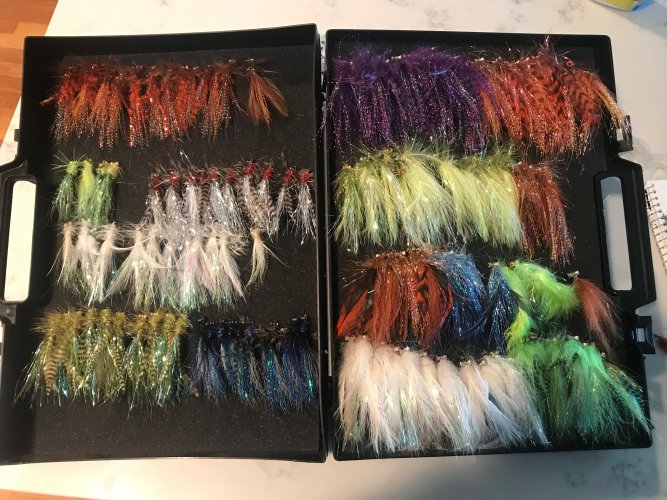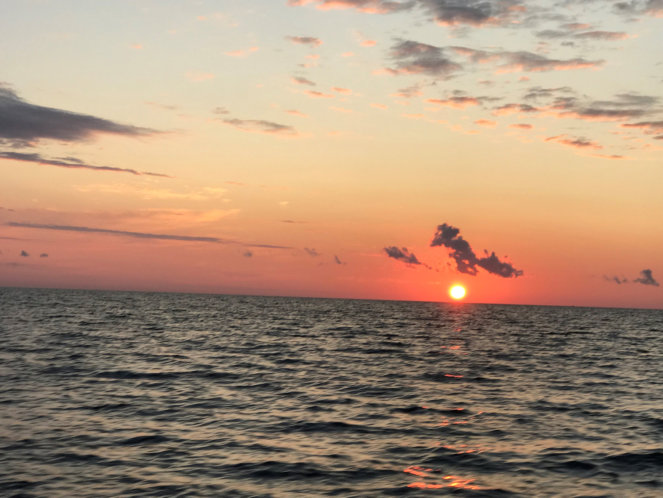Instruction
One key to a proficient and effective sports motion is repetition through pantomime. Whether shooting a basketball free-throw or casting a fly line the participant improves his or her skills by repeating the same motions over and over. Of course, these motions must also include good technique.
An effective way to improve a fly cast is to simplify and uncomplicate the casting motion. Break the movement down to its most basic form. This begins the process of “muscle memory”.
The term muscle memory is actually a misnomer. In fact, muscle does not retain memory. One scientific studied failed to show any difference in biopsies from “trained” and “untrained” muscle. Actually, we are building neural pathways in the brain that function instinctively. One author describes these functions as a “mental shortcut”.
When teaching the fly cast, I begin with the basic fundamentals without the fly rod in hand. At the Gulf Coast Fly Fishing School our instruction starts with a paint brush dipped in water. Using the wet paintbrush we mimic or pantomime the fly rod movement, and the principles of the fly cast including smooth acceleration, moving the brush back and forward in a straight line, and an effective stop at the end of this back/forward motion. Water droplets flying off the end of the moving brush give a good visualization of the paintbrush path. This will set the stage for a similar motion with a fly rod.
Once the paintbrush casting motion is mastered, we progress to a tubular swimming “noodle”. From there the final stage will be pantomiming the casting motion using a fly rod without line.
Even now as an experienced fly caster I may visualize and pantomime a new or modified casting motion using only my arm and hand. Often, I will use a mirror to aid my learning.
Pantomime is an overlooked but very effective method of teaching and self-improvement.
Doc Frangos
FFI Master Certified Fly-Casting Instructor
Instruction
The fastest and most efficient way to learn a new sport such as fly casting is with the guidance of an experienced instructor. Ideally this experience includes understanding the various modalities of teaching and recognizing what methods work best for the student. For example, one student learns best through visualization, while another is an auditory learner. Other methods might include an instructor using a hands-on approach holding the fly rod with the student and mimicking a cast, or teaching through pantomime.
No doubt there are fly casters who improve through self-discovery but most only succeed in reinforcing bad techniques. In my experience the intermediate caster is often the most difficult to teach because the bad habits are ingrained with “muscle memory”. I prefer a beginner anytime.
While fly fishing guides do a commendable job putting anglers on fish, most lack a basic teachable knowledge of casting fundamentals. An ability to cast and guide does not always translate into an ability to teach. I tend to look at fly fishing guides and fly casting instructors as two different professions. Not competitors but experts that should complement each other with the shared goal of setting the stage for a more enjoyable fly fishing experience with their clients.
Personally I hope more fly fishing guides and others in the fly fishing industry become more interested in teaching the proper fundamentals and essentials of fly casting. Positive signs in this direction are becoming more common. I am aware of some fly shops in my area of Idaho and Montana requiring FFI (Fly Fishers International) casting certification for their guides.
I would encourage fly casters of all levels to seek out qualified instruction to improve their casting. The Fly Fishers International website provides a list of qualified instructors throughout the USA and worldwide who have undergone extensive training in teaching fly casting techniques.
Doc Frangos
FFI Master Certified Casting Instructor
Instruction
Nothing works better in your casting than having two sets of eyes that are watching your casting. Having a casting partner for the last 9 years has been invaluable. Working out problems and continue to improve my casting. It is impossible to view your casting from all angles and with a casting partner you are able to evaluate all aspects of your cast. Whereas when you are casting by yourself you are generally only looking at one parameter such as tracking, loop formation, translation, rod stoppage. With a partner you have the luxury of someone that can walk from side to side and back to front and can critique you on the spot instead of trying to remember individually what you did wrong and what you did right. Combine this with videoing a casting partner is a huge asset while the video is recording. Your partner can help direct the casting session while it’s being videoed.
In addition to the physical aspects of having someone observe your casting and comment on it, your casting partner also serves as someone that you can have extended dialogues about fly fishing all elements. It’s nice to be able to bounce questions off someone on a regular basis and discuss and dissect fly fishing.
Your casting partner does not need to be a certified instructor, just someone who is willing to work with you on a regular basis and someone who can be honest about your casting.
I would encourage anyone who is interested in improving their casting to hook up with someone on a regular basis.



